These tips for teaching poetry in secondary ELA are perfect for National Poetry Month (April), and they’ll help you create engaging lessons year-round.
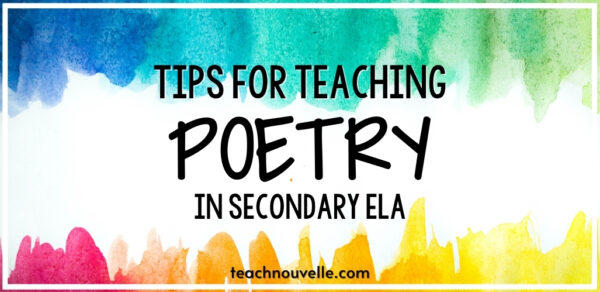
Is there a subject that divides students (and teachers, let’s be honest) more than poetry? Some folx (like me!) find poetry to be magical, moving, and merry, others find it to be confusing, boring, and a chore.
While that hurts my heart, I understand.
Poetry is a unique and exciting literary experience. A wide range of formats expressing a wide range of emotions. But our students can’t appreciate that if all we focus on is memorizing literary elements.
By creating an inclusive, relevant, and approachable poetry unit, we can help more kids to fall in love with poetry as an art form.
Over the years I’ve blogged a lot about teaching poetry in secondary ELA, so today I’m going to compile all of my favorite teaching tips and resources in one place.
Tips & Resources for Teaching Poetry in Secondary ELA
Digital Escape Room
What’s not to love about escape rooms? They foster teamwork, boost students’ confidence, and help bolster executive functioning. With distance learning, often the ability to work together in teams is lost, but that doesn’t mean that escape rooms can’t still be a great learning tool!
I recently finished a Digital Escape Room Poetry Review. It has a close reading activity with built in scaffolding for differentiation, and it helps students identify poetic devices and figurative language.
But my favorite part about this game is the stunning original art by Erin Kacerovskis. It will keep students engaged, and excited to see what comes next.
Poetry Read Aloud
So many options for this! You could give students a specific theme, or literary device, or simply allow them to pick their favorite poem to read aloud. Here are some ideas for great read aloud poems to get you started.
If possible, give students the option of sharing a recording of themselves reading their poem aloud, rather than requiring them to do a live reading on Zoom/Teams. Many students are dealing with an unpredictable home-life during their school day, so going “live” can be daunting.
Poetry “Story Starters”
I intended these poetry and song lyric writing prompts to inspire short fiction, but I think they would work very well for poetry prompts too. You can ask students to pick up where the snippets leave off, continuing the same theme and writing style, or you can let students be inspired by the prompt and write a poem in the style of their choosing.
With both paper and digital versions included, this resource works can be used for distance learning and classroom settings.
Haiku Movie Synopsis
Students probably learned about the Haiku in elementary school, so add a fun new twist by challenging them to summarize their favorite movies in the famous 5-7-5 structure. You can “up the ante” by having students read their Haikus out loud and letting their classmates guess the answer. This will quickly turn into a great game of movie riddles, all while exploring this classic form. Here’s a fun example:
“Hobbit gets a ring
Simply walks into Mordor
Has hairy feet. Ew.”
I think it’s much easier for students to write a Haiku from this sort of prompt, where they can pick something that excites them and that they already know a lot of details about.
Poetry Bellringers
This is an excellent review activity! Students get to practice identifying poetic devices, analysing a poet’s purpose, and even writing their own poems in a specific style. My Bellringers can be used digitally or in-person, and you can get a FREE week of them here 🙂
Poetry from “the horses’ mouth”
I love listening to authors reading their own work, and I think it’s an ideal way to help students connect with the art. Here are a few of my favorite clips of poets reciting their own work:
Maya Angelou reading “Still I Rise”, “Phenomenal Woman” and more.
Joy Harjo, first Native American Poet Laureate, reading her poem “An American Sunrise.”
Billy Collins – Everyday Moments, Caught in Time from TED. This clip is longer than the others (14 mins), but it’s so good. Collins’ is known for being an “approachable” poet, which makes him a great choice for introducing poetry to jaded high-schoolers, and in this TED talk he recites five of his poems, are each set to fanciful animations. You could play the whole talk, or pick one of them five poems, whatever works best for you!
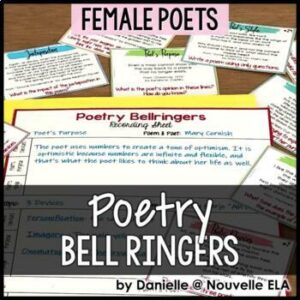
Celebrate Women’s History Month (March) and National Poetry Month (April) at the same time with this resource! These 30 bell ringers feature classic and contemporary poems. They provide students with many opportunites to analyze author’s style & purpose, practice identifying poetic devices, and see a mentor text to write their own poems!
 Poetry Speed Dating
Poetry Speed Dating
This is a fun, low-risk way for students to get out of their reading comfort zone and find poetry they enjoy! My students love the “free range” feel of this activity.
 Poetry Anthology Project
Poetry Anthology Project
This project allows students to explore famous poetry on a chosen theme, along with trying their hand at writing some poems.
This post uses Amazon affiliate links at no additional cost to you. Please consider purchasing any of these books using our links. Your support makes our blog possible.
Ink Knows No Borders edited by Partice Vecchione and Alyssa Raymond
This is a collection of poems from acclaimed authors such as Elizabeth Acevedo, Samira Ahmed, Carlos Andres Gomez (and many more!). These poems offer students unique insight into the immigrant and refugee experience. Ink Knows No Borders features 65 poems on subjects like stereotyping, language gaps, isolation, and homesickness. This book allows students to gain empathy and expand their cultural horizons through first person experiences.
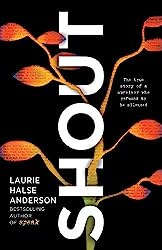
A memoir in free-verse. Published this spring, 20 years after her groundbreaking novel Speak, Shout is more than a memoir; it is a call to action. Laurie Halse Anderson shares her own trauma and laments the lack of progress we have made as a society towards abolishing rape culture. She is a fierce advocate for victims everywhere, and this book commands us to “shout” on their behalf.
This memoir, while fierce, also contains moments of humor. It’s easy to imagine asking students to write a free-verse reimagining of a moment from their own lives, using Shout as a mentor text.
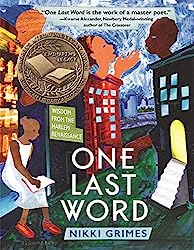
A celebration of Harlem Renaissance poetry. Using the ‘Golden Shovel’ composition style, Grimes juxtaposes beloved poems from the Harlem Renaissance alongside an original response of her own. She connects the work of Langston Hughes, Jean Toomer, and many others with her own perspective on modern-day events. The whole book is tied together with incredible illustrations. It is also a wonderful jumping off point for a writing assignment where students could pick a piece from the book (or elsewhere) to inspire their own ‘Golden Shovel’ poems.
This is absolutely one of my favorite books for teaching poetry!
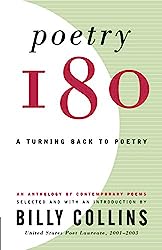
This collection, curated by America’s Poet Laureate, is an anthology of contemporary poetry, with entries from Philip Levine, Naomi Shihab Nye, Mary Jo Salter, and Edward Hirsch (and many, many more!). Collins has selected poems that will feel fresh, engaging, and sincere to any reader, even those who might be reluctant to pick up a book of poetry voluntarily. The collection was inspired by Collins’ Poem A Day project with the Library of Congress and would be a great choice for teachers who wanted to do a Poem A Day in their classes. He even offers some tips on how to read a poem aloud.
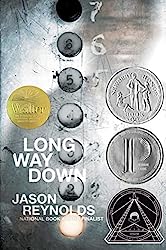
“Fifteen-year-old Will, immobilized with grief when his older brother Shawn is
shot and killed, slowly comes to mull The Rules in his head. There are three: don’t cry, don’t snitch, and “if someone you love / gets killed, / find the person / who killed / them and / kill them.”
Long Way Down is an award-winning YA novel told in free-verse. It’s a snapshot of sixty seconds in the life of fifteen-year-old, Will who is confronted with his dead brother, a loaded gun, and a choice about what comes next.
Books in verse are doing really well right now, and they’re great books for teaching poetry because they draw in even the most reluctant students.
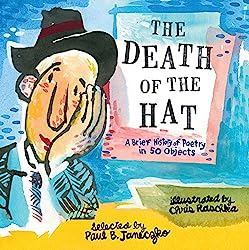
This collection of poems takes place in nine different time periods, from the Middle Ages to present day. Works from well-known poets such as Christina Rossetti, William Wordsworth, Emily Dickinson, and Robert Louis Stevenson are accompanied by charming and whimsical illustrations, all aimed at helping students understand how writers draw inspiration from the world around them.
This is one of the books I love to include in my Poetry Speed Dating activity!
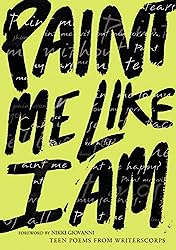
WritersCorps began in 1994 to help at-risk youth and has helped thousands of kids in New York, San Francisco, and Washington, D.C. to find their creative outlets. This book is a collection of poems from teens in their writing programs, and it’s a great chance for students to be inspired by their peers.
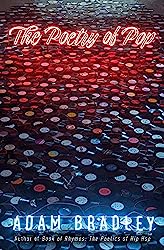
And since teachers love poetry too, here is a bonus recommendation especially for y’all 🙂
Did you know that in 2017, Bob Dylan received the Nobel Prize for Literature for his songwriting? The Poetry of Pop by Adam Bradley makes the case for a deeper appreciation of popular songs by examining and analyzing their elements, the way we would with a work of poetry. In the book we also hear from nine poets who walk us through a close reading of a pop song of their choice, with some surprising choices! Keep your phone handy while you are reading so you can listen to any of the songs that you might not be familiar with.
 Using Bellringers to Help Students Love Poetry
Using Bellringers to Help Students Love Poetry
Bellringers are a great “small dose” poetry experience. Here are tips and ideas for using poetry bell ringers.
Poetry Review Escape Room
Perfect for the end of your poetry unit, this resource reviews figurative language, poetic devices, and has close reading choices for differentiation! I have a paper and a digital version of this game.
Found Poetry in Fiction & Non-Fiction
Found poetry is a great way for students to create their own poetry with “no wrong answers.”
Bronx Masquerade Bundle
This Nikki Grimes novel in verse is a staple for teaching poetry, loved by teachers and students alike! Check out all my Bronx Masquerade resources in this bundle.
Teaching Bronx Masquerade
This book forever changed the way I teach poetry and allowed me to reach students who had previously been disinterested in poetry. In the post, I share tips from my experiences and lesson ideas.
Creative Writing Prompts for Literary Devices (Poetry & Song Lyrics)
These poetry & song lyrics snippets model poetic devices and inspire students to use them creatively in their own writing.
A free version of this activity can be downloaded when you visit the product page linked above 🙂
Poetry Resources Bundle
If you want to save big on my most popular poetry resources, check out this bundle! It includes: Bellringers, Found Poetry, Poetry Anthology, and much much more!
Do your high schoolers’ eyes glaze over at the word “sonnet”? Do they find poetry “booorrrrring?” You aren’t failing them, and I’m here to help! Today I’m sharing some tips and lesson ideas that are sure to help engage even the most reluctant poetry readers in your class.
1. How do you make poetry interesting?
Sometimes all it takes to help make poetry a more appealing subject to your high school students is changing the types of poems you are presenting to them. These blog posts are all focused on helping you to provide a wider and more inclusive variety of poetry for high school students in your classroom:
Contemporary Poems by Black Authors – It’s easy for students to feel like poetry is frozen in the past, but just like music or visual art, it’s constantly evolving and changing with the times. Poets like Amanda Gorman and Danez Smith are a voice for this generation and their works can help students see that poetry IS being written for them. Poetry is being written about current events and issues that they care about, and not just flowers and love stories from 200 years ago.
Verse Novels for the ELA Classroom – I’ve found that many students who weren’t interested in reading and discussing a sonnet can still appreciate verse novels because they like the story being told. Authors like Elizabeth Acevedo and Jason Reynolds have such compelling narratives that will help students “get past” the poetry aspect and focus on the story.
7 Books to Help Students Love Poetry – This post truly has something for everyone. Funny poems? Check. Poems written by teens? Check. Illustrated poems? Check. These books are all great choices if you’re teaching poetry for high school students, but even better, add a few of these to your classroom library to help students discover poetry with zero pressure or expectations.
2. What activities can you do with poems?
There are SO many fun poetry activities to choose from, but I love using an escape room to help get students excited about analyzing poetry.
This poetry escape room (available in paper and digital versions) helps students practice the basics while strengthening their teamwork and problem-solving skills. Students will identify figurative language, complete a poetic devices puzzle, do a poetry close reading, and decode a secret poem.
The paper version is fully editable, and the digital version includes beautiful digital art from @LadyKnightIllustration.
3. Creative poetry project ideas
Host a poetry slam – This is such a fun, multi-day project! I like to start this at the beginning of the week by having students watch poetry slam videos. You can find tons of examples online, but I especially love the ones from YouthSpeaks, an org that supports young writers and poets. Check out their YouTube channel for videos of their Slam Poetry finals, they are great examples of slam poetry for high school students.
During the week students can discuss the poems they watched or read, and start writing and workshopping the poems with their peers. Finally, on the last day, you can host the “slam” performance. Since students will be reading their poems aloud, it’s also a really great way to practice public speaking.
This is an activity that can absolutely be done at no cost to you, the teacher, but if you aren’t feeling confident I have a resource for under $2 that explains every step of the process.
1. Poem of the Day
Give students short poems to respond to as a bell-ringer. You can use the format One Thought, One Connection, One Question to get students thinking before you open the floor to discussion. Here are a couple of poems I love for this activity:
First Fig by Edna St. Vincent Millay
My candle burns at both ends;
It will not last the night
But ah, my foes, and oh, my friends—
It gives a lovely light!
Dreams by Langston Hughes
Hold fast to dreams
For if dreams die
Life is a broken-winged bird
That cannot fly.
Hold fast to dreams
For when dreams go
Life is a barren field
Frozen with snow.
2. Movie Haikus
Students probably learned about the Haiku in elementary school, so add a fun new twist by challenging them to summarize their favorite movies in the famous 5-7-5 structure. You can “up the ante” by having students read their Haikus out loud and letting their classmates guess the answer. This will quickly turn into a great game of movie riddles, all while exploring this classic form. Here’s a fun example:
Hobbit gets a ring
Simply walks into Mordor
Has hairy feet. Ew.
3. Found Poetry
“Found” Poetry is simply poetry that is crafted from another text. I love to have students “find” poems in other things that we’re reading – novels, short stories, and even non-fiction. You can check out my Found Poetry Packet here for ideas, worksheets, and teachers’ guides for this type of poetry.
4. Poetry Slam
Challenge your students to craft a poem for a class Poetry Slam. Students watch examples during the first class period, and then talk about their favorites. Over the course of the next couple of days, students workshop their poems with classmates. I’ve done this over the course of a week in the past, finishing off with a big celebration (the “Slam”) on Friday. Here’s a freebie to get you going.
5. Hip-hop
Did you know that much of Hip-Hop abides by the same rhythm as Shakespearean sonnets? It’s true! Your kids will get a kick out of watching Akala’s TEDx talk on the subject.
6. Sidewalk Poetry
Need an excuse to get outside? As an added bonus to any poetry unit, tack on a day where your kids go outside to write lines of poetry on the sidewalk. Whether students have collected poems or written their own, have them choose a stanza to share in chalk.
No sidewalk? No problem: Use a blacktop if you have one, or have students contribute to a “poetry wall” made of butcher paper in the hallway or your room.
7. Bronx Masquerade
This fantastic novel by Nikki Grimes is perfect for April. It’s short, high-interest, and contains a variety of poetry examples to discuss. If you don’t want to buy a class set, you can buy one copy and do a read-aloud. We read this over the course of two weeks in class.
Check out all of my Bronx Masquerade activities here.
8. Sonnets
Whether or not your students read a whole play, definitely spice up your study of Shakespeare by challenging students to write their own sonnets. Encourage students to think outside the box here – I’ve seen sonnets about Xbox, Wawa, and the Titanic.
Books in verse can be another great way to introduce and explore new writing styles when you’re teaching poetry in ELA. Especially for those students who claim to “totally hate poetry.” I’ll blurb some of my favorites below, and you can visit my affiliate list on Bookshop if you want to buy any of these titles.
Remember, using affiliate links doesn’t cost you any extra, but it gives me a small kickback to help make the content you enjoy 🙂
Inside Out & Back Again by Thanhha Lai (Elementary/MS)
This novel follows ten-year-old Hà as she and her family flee Saigon and arrive in America as refugees. This book is heartfelt and poignant, with astute observations about the world around us. Use this in grades 4-8 to build empathy for immigrants and refugees. Brief chapters make this perfect for a read-aloud.
Clap When You Land by Elizabeth Acevedo (HS)
Vennieta Grant from @loveteachrepeat reviewed this book on my blog and gave some excellent tips for how to use it in the classroom.
The Poet X by Elizabeth Acevedo (HS)
I have no words to describe this amazing, beautiful book. Instead, just listen to the author reading an excerpt.
Other Words For Home by Jasmine Warga (MS)
When things in Syria become too dangerous, her family sends Jude and her pregnant mother to live with their extended family in Cincinnati, leaving her father and brother behind, and in danger. The book deals with some heavy topics, like xenophobia, Jude’s fear for her father and brother, Jude struggling for a sense of identity, but in a very sensitive and age appropriate way.
This would be a superb book for broaching a discussion about complex issues like immigration, refugees, and racism. I have more ideas on teaching about immigration in this blog post.
Punching the Air by Ibi Zoboi & Yusef Salaam (HS)
This is not only a novel-in-verse, it’s also beautifully illustrated! It tells the story of 16-year-old Amal, who is falsely convicted of a crime he didn’t commit, and has only one solace in prison: his art. Read my full review here.
Brown Girl Dreaming by Jacqueline Woodson (Upper Elementary/MS)
This book is so cool because it’s a memoir in verse (like Shout), but for a much younger audience. All of Woodson’s books are amazing, and this one especially so because of the deeply personal topic. Check out this video of the author reading an excerpt if you want to be totally enthralled.
I also recommend Woodson’s TED Talk “What Reading Slowly Taught Me About Writing” in my blog post about using TED Talks to inspire young writers.
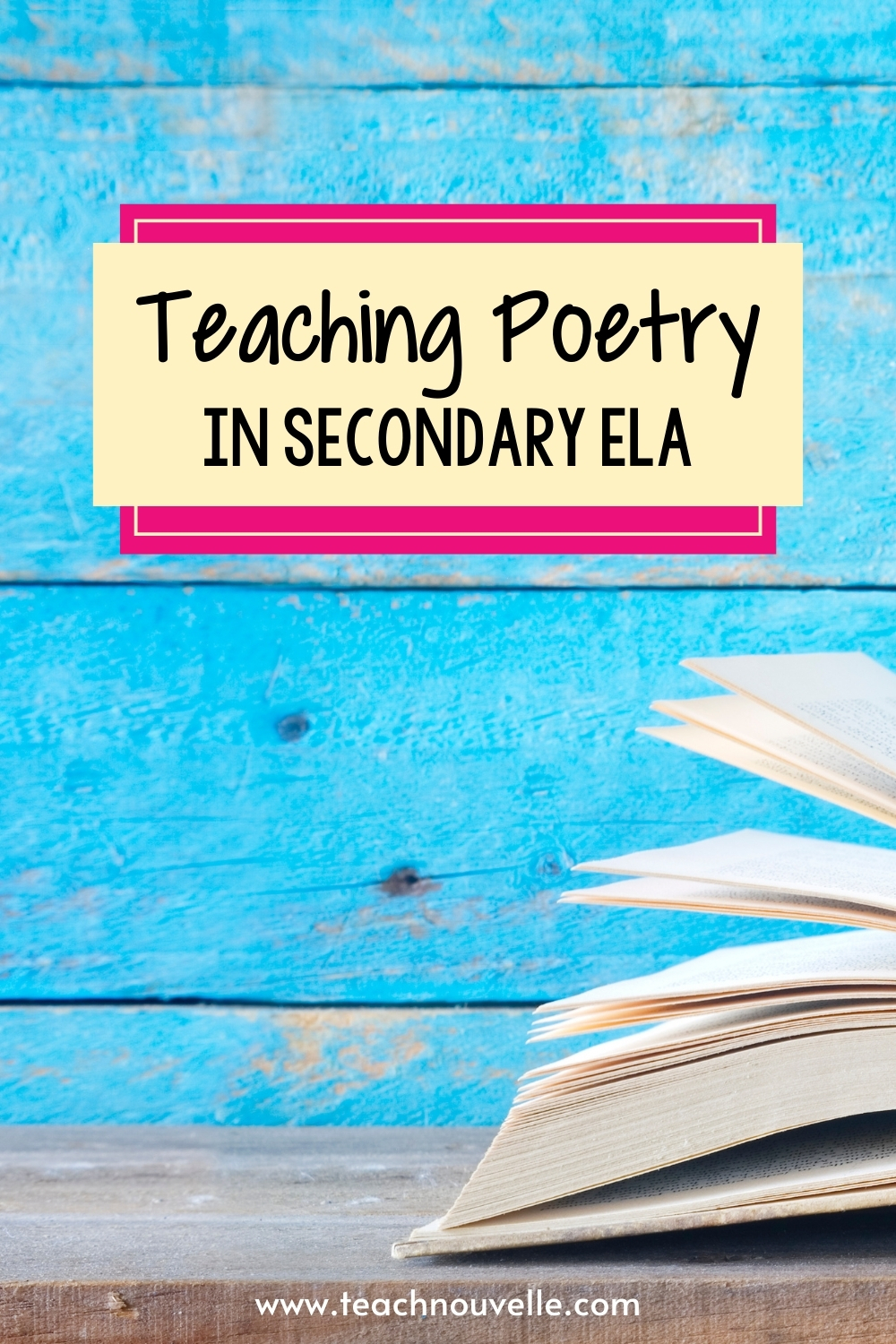
Final thoughts
I hope you enjoyed this collection of all my favorite tips, resources, and books for teaching poetry in secondary ELA.
Do you have a favorite novel in verse that I missed or a favorite poem to share with your students? Comment below so we can all learn! 🙂
Happy teaching!

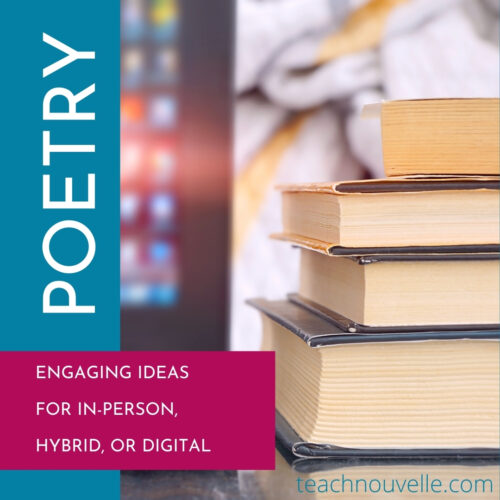
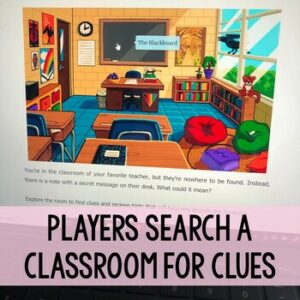

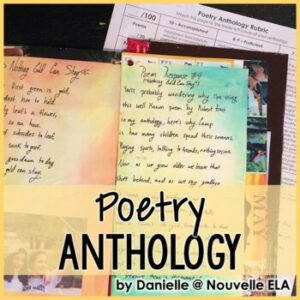

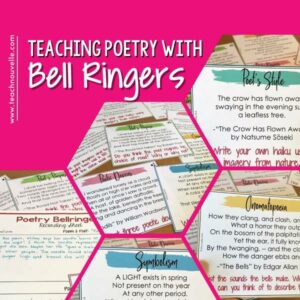 Using Bellringers to Help Students Love Poetry
Using Bellringers to Help Students Love Poetry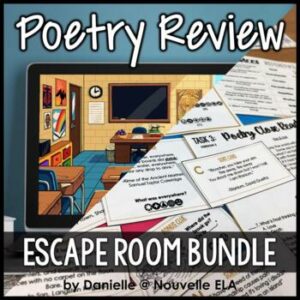
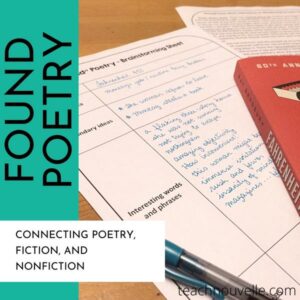
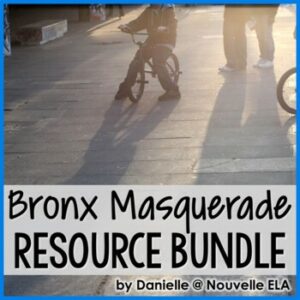
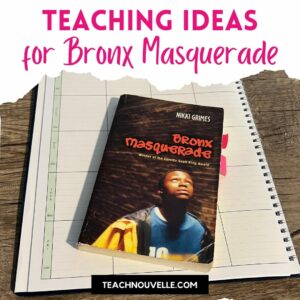
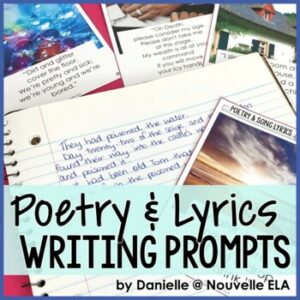
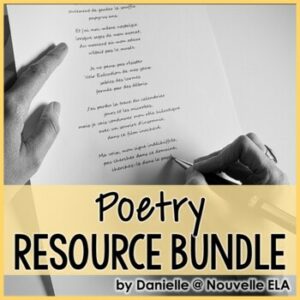
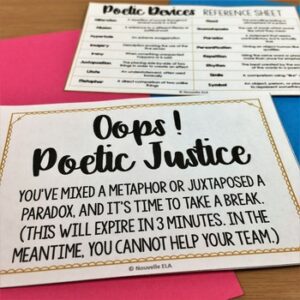
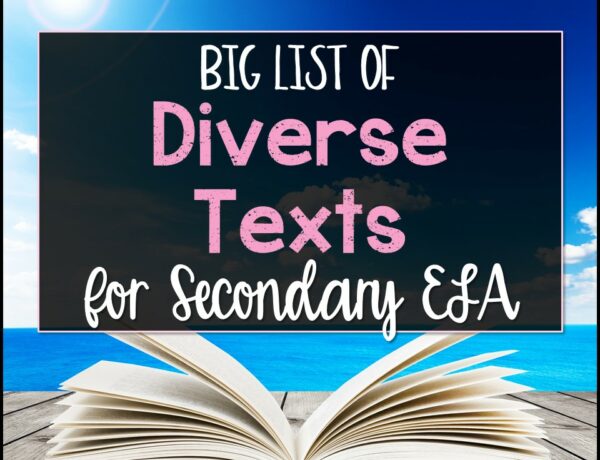
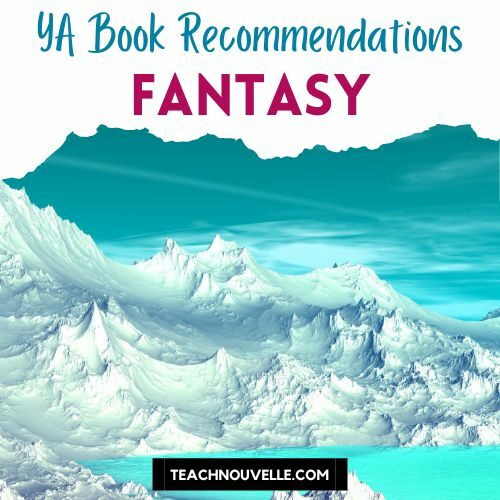
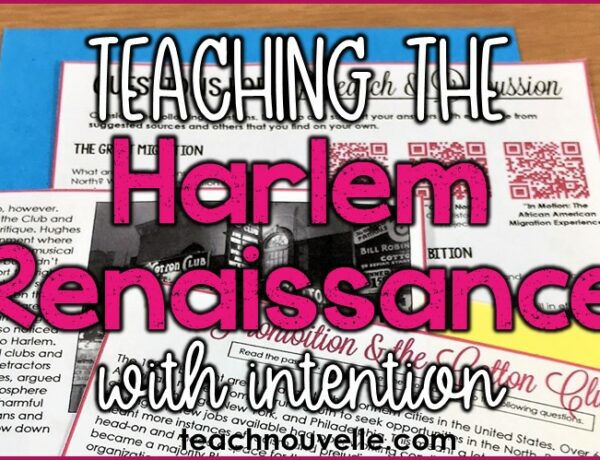
No Comments